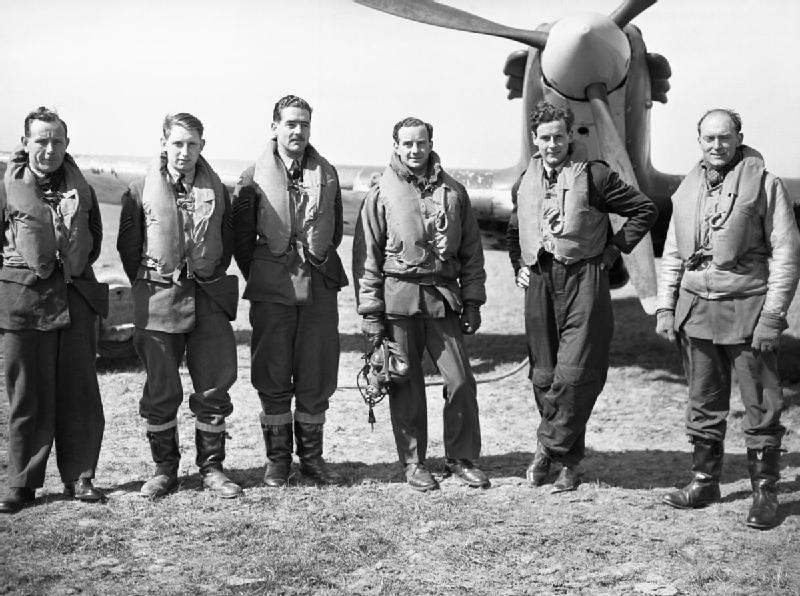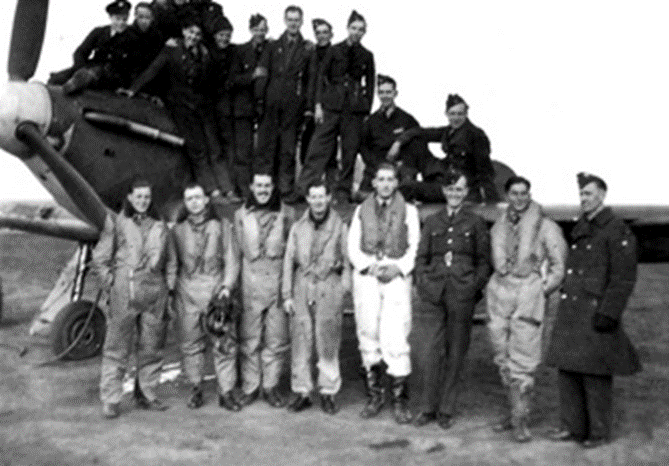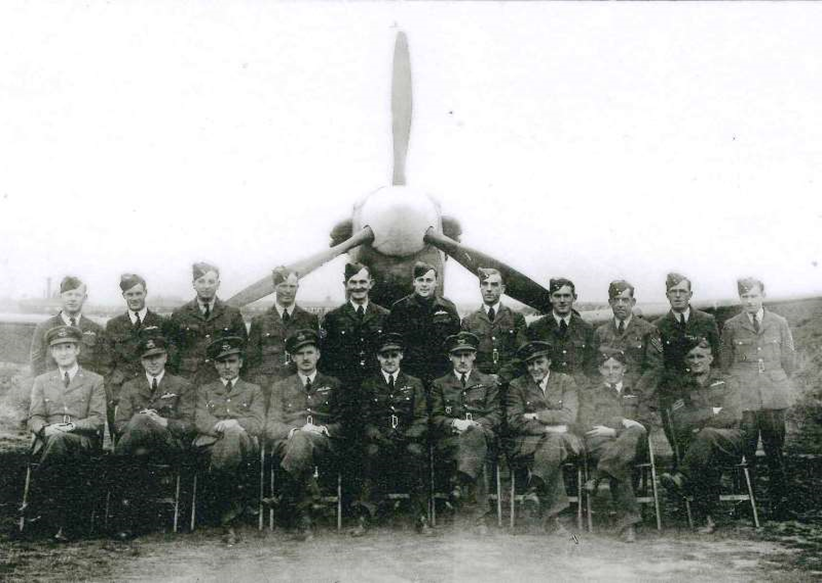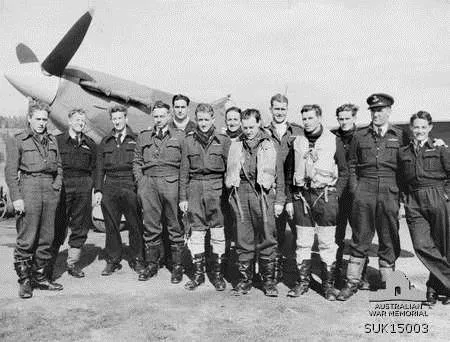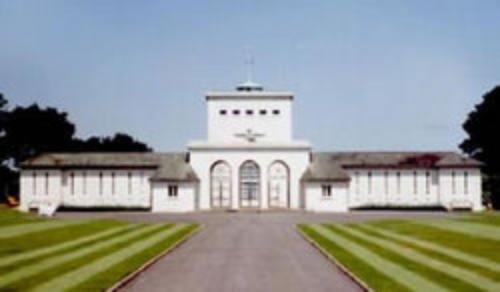FLTLT Harold Leslie North NZ 41608
DFC
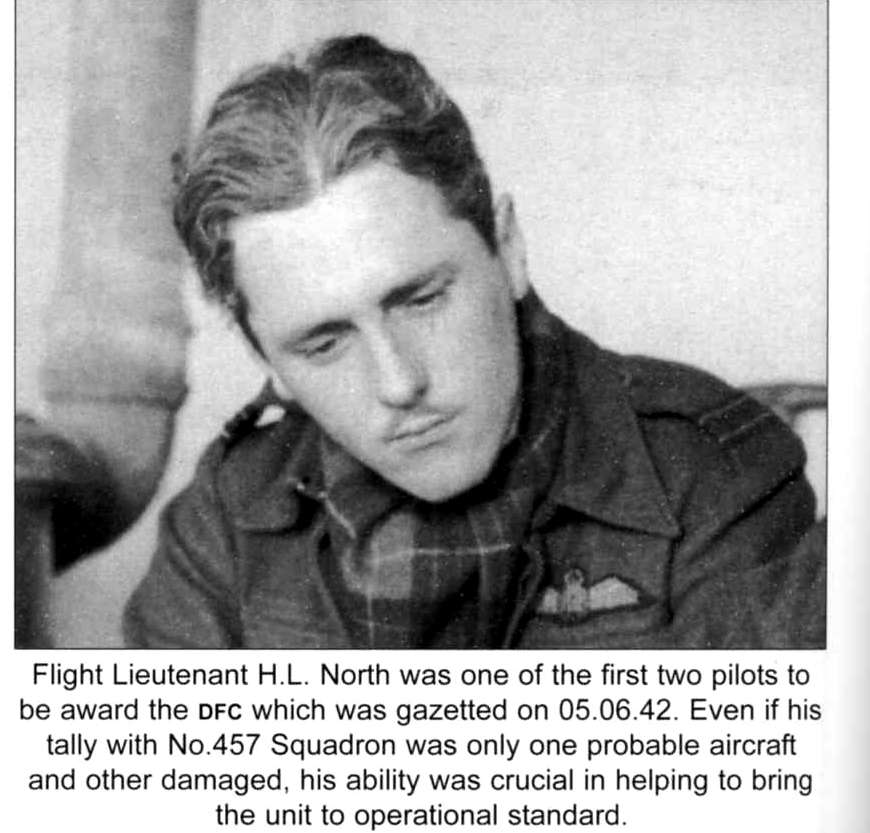


| Squadron/s | 43 SQN RAF 96 SQN RAF 457 SQN |
| Rank On Discharge/Death | Flight Lieutenant (FLTLT) |
| Mustering / Specialisation | Pilot |
| Date of Birth | 31 Oct 1919 |
| Date of Death | 01 May 1942 |
| Contributing Author/s | Compiled by Vince Conant May 2014 The Spitfire Association |
Harold was born in Dunedin, New Zealand on the 31st of October 1919. He was employed as a law clerk following his education at Wellington College. In early 1938 he applied for a short service commission and sailed to Britain on the Rangitane. On completing his training he joined 43 Squadron in November the 20th 1939.
A Battle of Britain veteran he then served with No. 96 Squadron between December 1940 and April 1941 before being posted to No 457 Squadron as First A Flight Commander between 23/6/41 and 1/5/42.
Flight Lieutenant H. L. North was one of the first two pilots to be awarded the DFC which was gazetted on the 5th of May 1942. Even if his tally with No 457 Squadron was only one probable aircraft and another damaged, his ability was crucial in helping to bring the unit to operational standard. Later his victories were to increase.
During the Battle of Britain he claimed a Ju-88 shot down together with another probable.
On August 26th, North was in combat this time over Portsmouth at 1650 hours claiming a He-111 destroyed and another probable. However, he sustained damage to his Hurricane Mk 1 (V7259) forcing him to bale out. He landed at Birdham and was subsequently admitted to the Royal Sussex Hospital with shell splinter wounds to his head and shoulder. He was back with 43 Squadron on September the 10th and joined 96 Squadron on its formation.
After a rest in April 1941 he joined No. 457 (RAAF) squadron late June 1941 as Flight Commander. Here he claimed further kills in March and April. On May the 1st 1942 the squadron was detailed to provide high altitude cover for a bomber raid on a munitions factory at Marquise. North was last seen diving from 17,000 feet ten miles inside the French coast. He was not seen again and is believed to have been killed in action.
Harold North is commemorated on panel 66 of the Runnymede Memorial.
14th of January 1939: Acting Pilot Officer (Probation)
3rd of September, 1939: Pilot Officer (Probation)
31st of October, 1939: Pilot Officer
3rd of September, 1940: Flying Officer
3rd of September, 1941: Flight Lieutenant (war sub)
Prewar, he had a SSC (Short Service Commission) with the RAF and served with 43 Squadron RAF from November 1939, and 96 Squadron RAF between December 1940 and April 1941. He was then posted to No 457 Squadron RAAF as its first A Flight Commander between the 23rd June 1941 and the 1st May 1942.
On the 1st of May 1942, 457 Squadron was detailed to provide high altitude (25,000 feet) cover for a Hurricane bomber raid on a munitions factory at Marquise. His Spitfire was last seen diving from 17,000 feet, ten miles inside the French coast at St Omer. It was not seen again and is believed to have been shot down. Harold is listed as Missing in Action and he is commemorated on the Runnymede Memorial. (WM: Information sourced from Aviation Safety Network)
Harold was one of the first two pilots to be awarded the DFC, which was gazetted on the 5th of June 1942. He had three confirmed victories while with 43 and 457 Squadrons. (WM: The London Gazette, 5th June 1942, states that he destroyed five enemy aircraft.)
In September 1938, Harold sailed for the United Kingdom to take up a short service commission in the RAF. Having completed his training shortly after the outbreak of war, he joined 43 Squadron in late November 1939. Up until the end of July 1940 the unit saw little action but in mid-August it returned to its pre-war base at Tangmere. On the 18th twelve Hurricanes of 43 intercepted twenty-eight Ju 87's forming up to attack the radar station at Poling. At the beginning of their dives the Stukas were at their most vulnerable and the Hurricanes followed them down, destroying or damaging seven. North claimed one destroyed and one probable.
On the 26th of August he was leading a section when No.43 was dispatched with other squadrons to intercept fifty He III bombers moving westwards towards Portsmouth, escorted by one hundred fighters. North himself made a head-on attack on a formation of six bombers and he was nearly hit as he broke away by some of the bombs being jettisoned into the sea. He returned to the attack and, after two bursts, saw his He III begin to smoke, its undercarriage dropped and as at least one of the crew baled out the bomber dived away. At this point North's aircraft was hit by a cannon shell, splinters of which went into his shoulder, and his vision was impaired by pieces of perspex from his shattered hood. Recovering from the shock, he wiped his face and checked his aircraft; looking up he saw three He III's passing overhead. He turned and used his remaining ammunition on the rearmost of the three. North last saw it diving steeply inland with one engine smoking - it was later confirmed as destroyed. His Hurricane was now hit again and he baled out. After landing, he was taken to hospital in Chichester.
North re-joined 43 in mid-September 1940 in the north for a rest. He remained with it until mid-December, when he was posted to 96 Squadron which was then being formed for night defence in Liverpool. In March 1941, North went to No.3 Aircraft Delivery Unit and did not return to operational flying until late June. A new squadron, 457, was being formed, mostly with Australian pilots, and North joined it as a flight commander. On becoming operational in July 1941 the unit was sent to the Isle of Man on convoy patrol duties.
The Squadron joined the fighter offensive against France in March 1942 and during an attack on the docks at Le Havre on the 26th North shot down a FW 190 and two days later damaged another. In April, he shot down another FW190 and damaged two more.
Twelve Spitfires of 457 took off in the early evening of May 1 1942, to act as high cover for bombers raiding the shell-making factory at Marquise. North was last seen diving on an enemy fighter at 17,000 feet about ten miles inland from the French coast. He was not heard of again and is presumed to have been killed in action. North was awarded the DFC in June 1942.
The unit ground crew left Bagington for Jurby, I.O.M, by Handley Page Harrow aircraft on the 24th July 1941. Three days later, my flight commander, Flight Lieutenant Harold "Knockers" North approached me at a moment's notice to ask would I go to the mainland in an Avro Anson, about to take off, so as to collect his car, an essential for seeking out Manx pubs. Now this happened to suit me as my current girlfriend had just been posted to Squires Gate, Blackpool. I had to book the car for the ferry on the next day, so I faced a night's stopover without a single item of small kit. However the prospect of meeting the girlfriend offset the humiliation of using my vest as a towel and breakfasting unshaven and scruffy. Also the trip paid off another way as "Knockers" would generally include me as engineer in his car crew on beery expeditions. Incidentally, some four years later in Egypt, while acting as President of the Sergeants Mess Committee (PMC) at Fayid, I arranged for a couple of handsome aircrew to tour the Canal Zone units to recruit females for our summer ball. One of these turned out to be a nurse from Harold North's home town, Dunedin NZ, and she remembered him from school days.
Service number: 41608
Rank: Flight Lieutenant
Unit: 457 Sqn RAAF
Service: RAF
Conflict: Second World War, 1939-1945
Award: Distinguished Flying Cross
Date of London Gazette: 5 June 1942
Location in London Gazette: Page 2429, position 1
